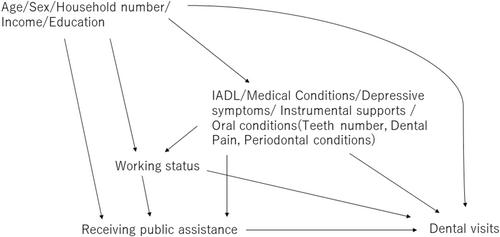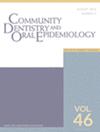Prevalence of dental visits in older Japanese adults receiving public assistance
Abstract
Objectives
Exemption from paying dental care costs among recipients of public assistance contributes to universal health care coverage. Although this system might reduce the financial barriers to dental care among patients, there are still several other barriers for public assistance recipients. Therefore, this study examined whether receiving public assistance was associated with a higher prevalence of dental visits for any reason, treatment and prevention.
Methods
Data were obtained from 16 366 respondents from the 2019 wave of a nationwide cohort study on older adults in Japan. Poisson regression analyses with robust error variance were used to examine the associations between receiving public assistance and dental visits, adjusting for number of teeth, dental pain, periodontal conditions, age, sex, number of family members, education, equivalent household income, working status, instrumental activities of daily living, medical conditions, depressive symptoms, instrumental support and geographical variations.
Results
More than half of the non-recipients of public assistance visited a dentist for some reason in the past 6 months. Meanwhile, only 37% of the recipients visited a dentist. In addition, almost half of the non-recipients had treatment visits, while only 34% of the recipients visited. Furthermore, 46% of the non-recipients had dental visits for prevention, while 32% of the recipients had preventive visits. In the fully adjusted models, compared to non-recipients, public assistance recipients were 24% (Prevalence Ratio [PR]: 0.76, 95% Confidence Intervals [CI]: 0.64, 0.90), 23% (PR: 0.77, 95% CI: 0.65, 0.92) and 21% (PR: 0.79, 95% CI: 0.65, 0.95) less likely to have dental visits for any reason, treatment, and prevention, respectively.
Conclusions
Although recipients were exempted from dental treatment fees, receiving public assistance was associated with a lower prevalence of dental visits for any reason, treatment and prevention. Future studies should identify the barriers to accessing dental care among public assistance recipients to improve dental visits.


| 公司名称 | 产品信息 | 采购帮参考价格 |
|---|
 求助内容:
求助内容: 应助结果提醒方式:
应助结果提醒方式:


